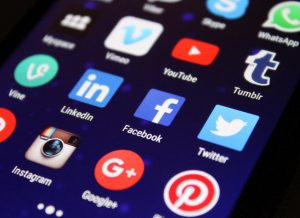The 23rd of November, 2022 was a significant day in Nigeria’s history as the CBN unveiled new designs of some denominations of the Naira notes. This Naira redesign was a big occasion preceded by a lot of anticipation and sneers in some quarters. However, regardless of what anyone thought of the project, the notes were presented by President Muhammadu Buhari, in the company of other dignitaries and those who took the time to follow the program.
The frenzies didn’t end there. It was followed by days of debate everywhere people could discuss. Among the different array of opinions regarding this important event, here are some cogent points to take as you get hold of the new notes.

Why Redesign the Naira?
The Naira redesign is long overdue. For the past 19 years, the Naira has maintained the same pattern, color, and design. This is contrary to the international practice which advises that the currency design be reviewed every 5 to 8 years. Also, people are now accustomed to the old notes which makes having a new design a matter of urgency. More so, over the years, we’ve had cases of money hoarding all over the country. This self-aggrandizing act makes it difficult to trace the amount of money in circulation. Prequel to the unveiling of the new notes, the CBN governor mentioned that more than 80% of the previously printed notes were untraceable.
With the bulk of printed notes untraceable, there’s difficulty in controlling the amount of money in circulation. Aside from inflation and deflation, this has made it difficult to tackle the problem of counterfeits. Thus, a currency with upgraded security features is necessary to confront the problem of easy counterfeits that illegal innovation poses.
Finally, the Naira redesign will also enhance the adoption of the CBN cashless policy. Alongside this redesign were policies to reduce the use of physical cash. One good example is the introduction of weekly withdrawal limits for individuals and companies. This policy will help to curb the reliance on physical cash and make people see the merits of going digital in their daily transactions.
Reactions Trailing the Naira Redesign
Trust Nigerians not to waste time in pointing out how the new notes look like a color filter of the old. Some questioned the rationale behind what they perceived as a waste of the country’s resources. While a few termed the color change as “a Snapchat filter.” Meffy wouldn’t find that funny, but we all had a good laugh regardless. On a serious note now, this led us to frantic days of designing exhibitions online by professional designers and regular people who believe they could have done a better job. But we can only have one design, right?
Some saw the rush in effecting a change of notes as a plan to sabotage the plans of politicians in the coming election. To this set of people, it’s a welcome policy. The belief is that the policy will reduce vote-buying. Outside the online space, there are people still ignorant of the change.
There are cases of people refusing the new notes as legal tender on the pretext that they’re fake. With the timeline given by CBN before the full adoption of the new notes, I believe there should be enough awareness regarding them.
We’ve had cases of the new notes fading off people’s pockets or peeling. That’s not in any way a good representation of the country’s first attempt to produce new notes locally.
Effects of the Naira Redesign
One significant effect of the naira redesign is the challenge of people adapting to the new policies that accompany this move. A cashless economy remains a big challenge in this part of the world. There are several complaints about system malfunction when it comes to the use of digital banking and much more. Our digital banks still struggle to cater to the needs of people on their platforms. Now that everyone must go digital due to the new limits placed on physical cash, the pressure will get even wesser.
Another problem is the limitation placed on small business owners who can’t see the need to go digital. There’s a need for more education on people’s reception of the new notes and the policies regarding it. CBN seems to have a solid plan but how to go about it with the challenges facing Nigeria is what they have a problem with. This is probably why they have been foot-dragging on some of their policies and extending their deadlines. It appears they haven’t done their homework well before submitting it to Nigerians. And that will only lead to a lot of reviews and reevaluations.
Pointers that Differentiate Fake from Original New Naira Notes?
We agree it can be difficult to easily recognize genuine new Naira notes. But, thanks to the various security features on the new Naira notes, here are five pointers that differentiate a fake Naira from the original one:

The Texture
Is the texture of that new Naira note soft and the image in it appears dull? Then, there is a cause for concern. You can reject it and demand another one.
The Gold Foil
There is a gold foil on the right side of the new N1000 note, just near the CBN governor’s signature. When you scratch the gold foil of a fake note it peels off instantly unlike that of the original note that doesn’t peel.
Soluble Color Change
When you aren’t sure of the originality of a new Naira note, dip it in water or petrol and scrub it gently. If the colors change immediately, it is fake money.
The Ribbon/Thread
Have you observed that thread on all Naira notes like a ribbon, running from the top to the bottom? In real notes, this thread can be felt with a touch. But, what you have on the fake notes peels off like the solver panel on recharge cards when you scratch the painting.
Mercury Bulbs
You can’t see some of the qualities of the original paper Naira notes with the naked eye except with the help of mercury bulbs. For instance, a real N1000 note when placed under the rays from a mercury bulb displays a shining 1000 (in numbers) written across the note. You can also find something similar in the smaller denominations.
Conclusion
In My Opinion, Nigeria gets negative PR globally for various reasons. Our currency redesign shouldn’t be one of them. Meanwhile, the far-from-satisfactory new design isn’t the only challenge here. In my opinion, another challenge is the policies accompanying this redesign and the timeline for enforcement.
However, there’s never a great time to adopt policies. We can only adapt to them. In essence, the naira redesign couldn’t have come at any other time than we have it now. But the policies seem rushed on us. And Nigeria being Nigeria, we can expect an extension in the timeline given for the enforcement of the policies, and rightfully so.
Finally, that we are yet to see the new notes flooding our markets even with the deadline given is puzzling. By this time, banks shouldn’t be recycling the old notes into the market anymore. In my opinion, that goes against the purpose of this redesign and its accompanying policies. Let’s see what happens in the next few weeks.



